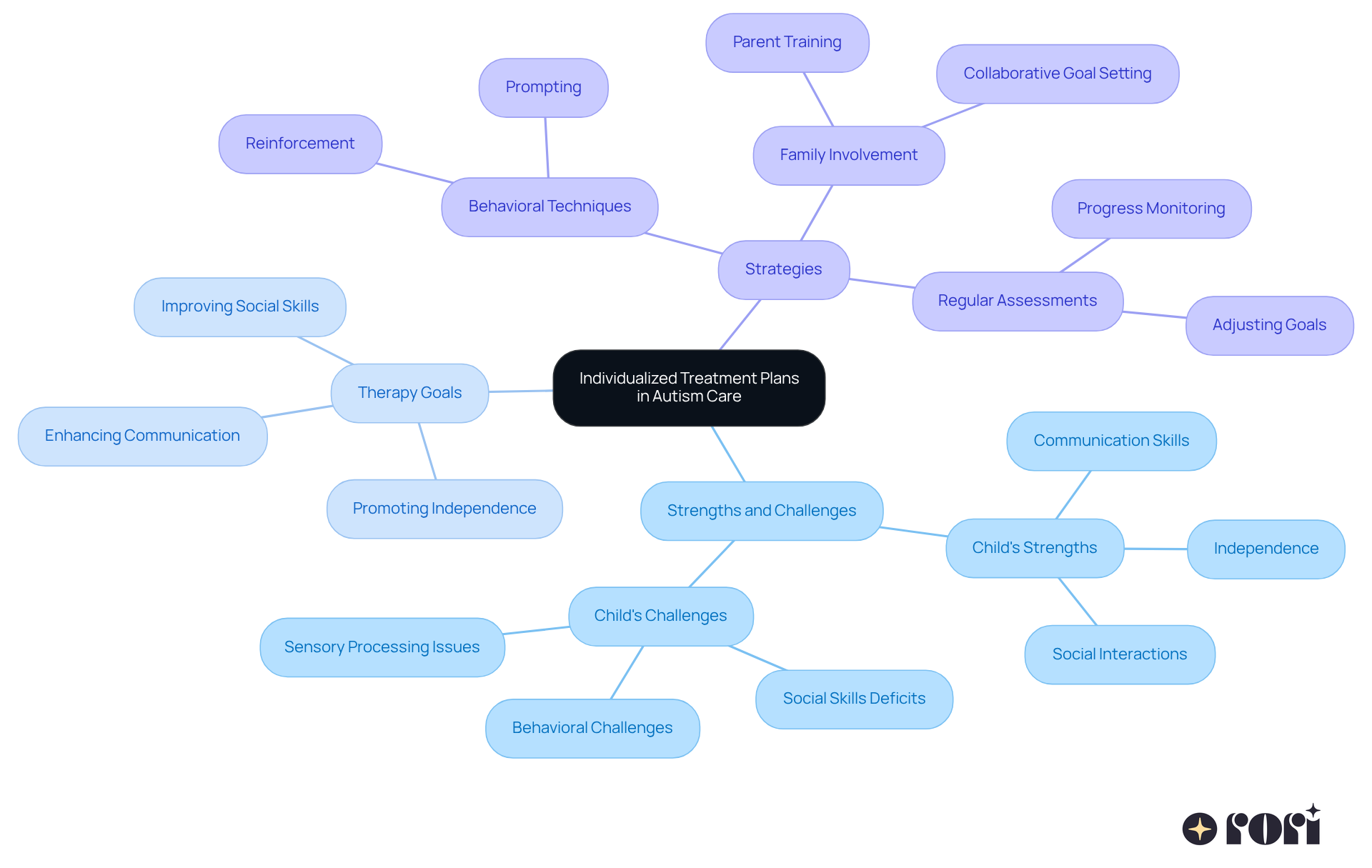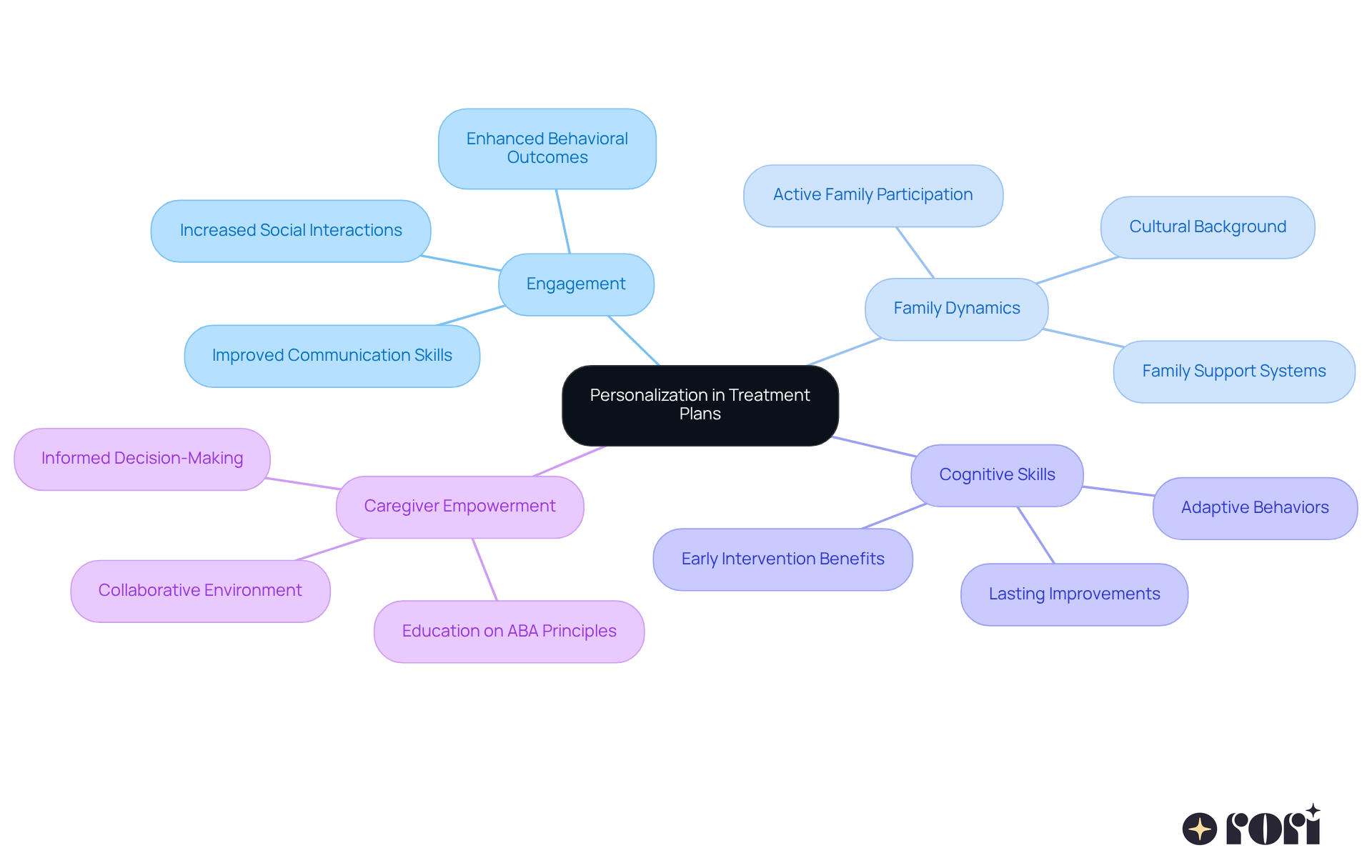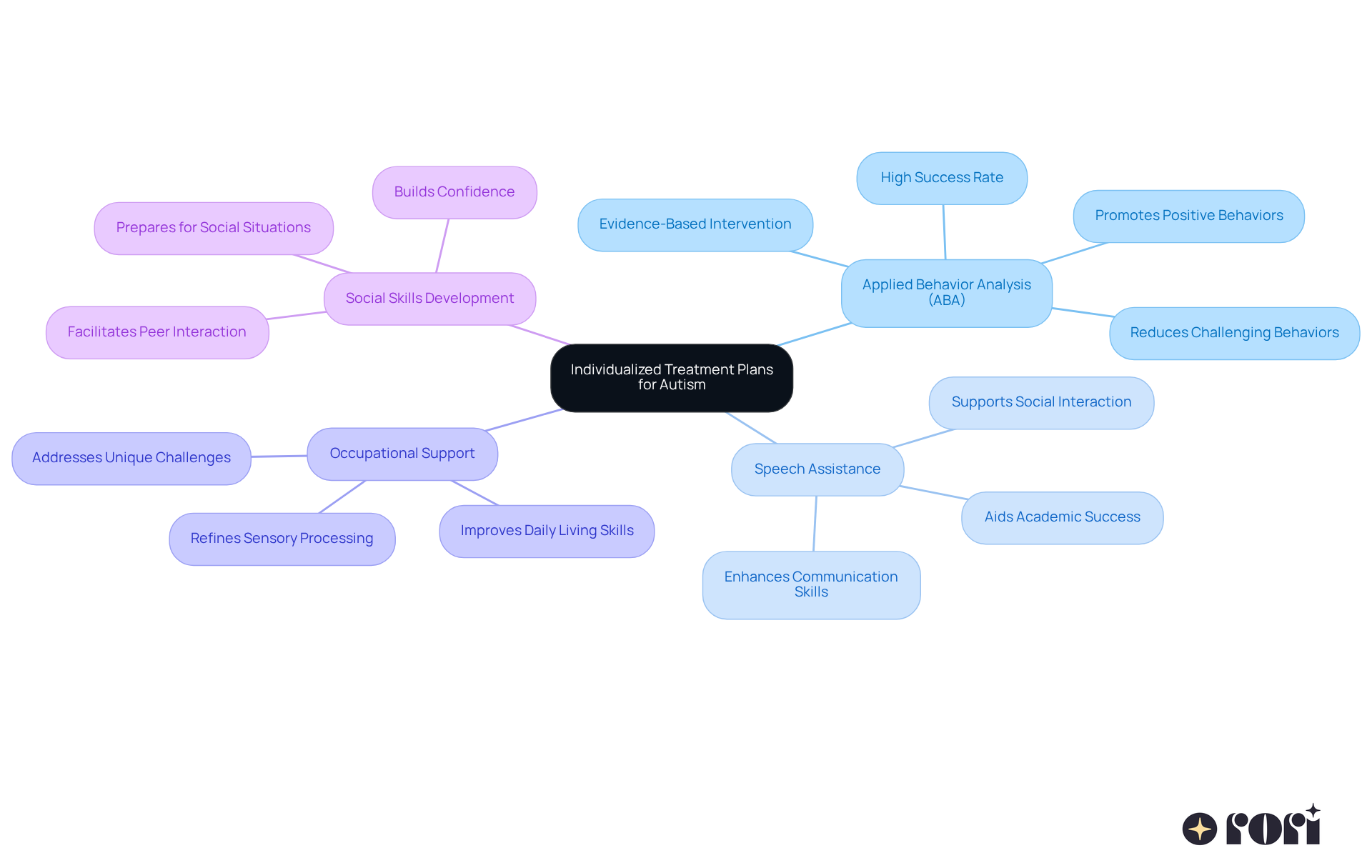Navigating autism care can feel like a daunting journey, can’t it? But here’s the good news: individualized treatment plans (ITPs) shine a light on a path that’s tailored just for your child’s unique needs. These personalized roadmaps not only boost communication and social skills but also nurture independence, creating a supportive environment for growth.
So, how can families ensure these plans are developed effectively and continuously refined to meet their child’s evolving needs? Let’s explore the intricacies of ITPs together! They offer not just benefits, but also highlight the collaborative efforts needed to maximize their impact.
We’re here to help you every step of the way! Let’s dive into this journey together!
The benefits of individualized treatment plans for autism are evident as they serve as personalized roadmaps designed specifically for each child on the autism spectrum. They’re created through a team effort involving healthcare professionals, parents, and the child, ensuring that every part of their growth is thoughtfully considered.
An ITP usually includes:
By focusing on the individual, ITPs demonstrate the benefits of individualized treatment plans for autism in boosting communication skills, encouraging social interactions, and promoting independence. This tailored approach is increasingly recognized for its benefits of individualized treatment plans for autism care.
Let’s explore this together! Understanding how ITPs work can really make a difference in your child’s journey.

Personalization in treatment plans is so important! It allows us to tailor interventions to fit the unique needs, preferences, and strengths of each individual. You know, studies show that young people who receive customized treatment tend to be more engaged. This engagement often leads to real improvements in communication skills, social interactions, and overall behavior. For instance, there was a significant increase in expressive language, with a standardized mean difference of d=-3.52 and p=0.01.
But it doesn’t stop there! This approach also takes into account the young person's environment, family dynamics, and cultural background, all of which can play a huge role in their learning and growth. When families actively participate in therapy, it really boosts progress and makes personalized approaches even more effective. By customizing care plans, clinicians can create a supportive therapeutic experience that resonates with the young individual, fostering a sense of ownership and motivation in their journey.
Research highlights that early and comprehensive support, especially when tailored, leads to lasting improvements in cognitive skills and adaptive behaviors. This really underscores the benefits of individualized treatment plans for autism in care. Plus, studies show that intensive and long-term applications of ABA principles can significantly enhance outcomes for individuals with autism, with over 89% of studies reporting positive results for those undergoing ABA therapy.
And let’s not forget about empowering caregivers! Educating them on ABA principles boosts their ability to provide the right support at home, leading to informed decision-making and better behavioral outcomes. This active involvement not only complements professional interventions but also creates a collaborative environment that’s crucial for the young person's development.
So, let’s explore this together! We’re here to help you every step of the way!

When it comes to developing treatment plans, collaboration is key! It’s all about bringing together parents, therapists, educators, and medical professionals to create a plan that demonstrates the benefits of individualized treatment plans for autism and truly fits the individual’s needs. By including different perspectives, we can better understand what works best for each child.
Effective teamwork not only boosts communication among everyone involved but also helps streamline interventions. It’s like having a united front, all working together to support the individual. Regular meetings and open conversations are super important for tweaking care plans as needed, ensuring they remain relevant and effective over time.
By fostering a collaborative environment, families can better appreciate the benefits of individualized treatment plans for autism, feeling empowered and supported throughout their child’s therapeutic journey. It reinforces the idea that teamwork is essential in autism care. So, let’s explore this together! We’re here to help you every step of the way!

There are some key treatments and approaches that highlight the benefits of individualized treatment plans for autism and can really make a difference in personalized care strategies. Think of:
ABA stands out as one of the most effective evidence-based interventions. It helps promote positive behaviors while reducing challenging ones through reinforcement strategies.
You might be surprised to learn that kids who undergo intensive ABA treatment-often more than 25 hours a week-show remarkable improvements in communication, social skills, and daily living abilities. Isn’t that encouraging?
Speech assistance is another vital piece of the puzzle, enhancing communication skills that are so essential for social interaction and academic success.
Then there's occupational support, which focuses on improving daily living skills and refining sensory processing. This is crucial for addressing the unique challenges many kids with autism face.
And let’s not forget about social skills training! It’s key for helping children interact effectively with peers and adults, giving them the confidence to navigate social situations.
What’s great is that the benefits of individualized treatment plans for autism enable each of these treatments to be tailored to fit the individual’s specific goals and needs. This ensures a comprehensive approach to their growth.
By combining different therapies, care strategies can harness the benefits of individualized treatment plans for autism to address various aspects of a child’s life, promoting overall development and independence.
Let’s explore this together! Every step you take can lead to a brighter future for your child.

When it comes to supporting our kids with autism, continuous evaluation and oversight of care strategies are key. Regular check-ins help clinicians keep track of how the young person is doing, spot areas that might need a little extra love, and tweak interventions as needed. This process often involves gathering insights on specific goals laid out in the personalized care plan (PCP), looking for patterns, and making informed choices based on how the individual responds to the support.
At Rori Care, we’re all about making this process smoother. With our advanced AI technology, we automate progress report creation, freeing up 50% more time for direct care. Isn’t that amazing? Research shows that 66% of kids who start ABA therapy stick with it for at least 12 months, which really highlights how important those ongoing evaluations are.
Families, you play such a vital role in this journey! Your feedback on your child’s behavior and progress at home is invaluable. As the American Psychological Association points out, "Assessments play a crucial role in identifying the function behind challenging behaviors." By maintaining a dynamic approach to treatment, clinicians can maximize the benefits of individualized treatment plans for autism, ensuring that interventions remain aligned with your child’s evolving needs, which leads to better outcomes and a happier life.
Plus, with Rori Care’s automatic data collection, session recording becomes a breeze. This means clinical teams can focus on being present for your child without interrupting therapy for data entry. It’s a win-win! This innovative approach not only streamlines the assessment process but also makes regular evaluations less of a burden for families.
Let’s explore this together! We’re here to help you every step of the way!

Individualized treatment plans (ITPs) for autism are a real game-changer in personalized care! They offer tailored strategies that cater specifically to the unique needs of each child on the spectrum. By bringing together a collaborative team of healthcare professionals, parents, and the child, ITPs act like dynamic roadmaps. They not only enhance communication and social skills but also help foster independence. This personalized approach is key to maximizing the potential for positive outcomes in autism care.
Throughout this article, we’ve seen how important personalization is. Customized treatment plans lead to greater engagement and improved skills in children. For instance, therapies like Applied Behavior Analysis (ABA), speech assistance, and social skills training can be adapted to meet individual goals. Plus, ongoing assessment and collaboration among caregivers and professionals are crucial for keeping treatment relevant and effective over time.
Ultimately, embracing individualized treatment plans for autism isn’t just about addressing immediate needs; it’s about empowering children and their families for a brighter future. By prioritizing personalized care, fostering collaborative environments, and committing to continuous evaluation, we can significantly enhance the overall quality of life for individuals with autism. Remember, the journey toward effective treatment is a shared one, and every step we take can lead to lasting positive change. Let’s explore this together!
What are individualized treatment plans (ITPs) in autism care?
Individualized treatment plans (ITPs) are personalized roadmaps designed specifically for each child on the autism spectrum, created through collaboration among healthcare professionals, parents, and the child.
What does an ITP typically include?
An ITP usually includes a thorough assessment of the child’s strengths and challenges, clear therapy goals, and specific strategies to help achieve those goals.
How do ITPs benefit children with autism?
ITPs benefit children by boosting communication skills, encouraging social interactions, and promoting independence through a tailored approach.
Why is personalization important in treatment plans for autism?
Personalization is important because it allows interventions to be tailored to fit the unique needs, preferences, and strengths of each individual, leading to greater engagement and improvements in communication, social interactions, and overall behavior.
What role do families play in the effectiveness of personalized treatment plans?
Families play a crucial role by actively participating in therapy, which boosts progress and makes personalized approaches more effective.
What does research say about the impact of early and comprehensive support in autism care?
Research indicates that early and comprehensive support, especially when tailored, leads to lasting improvements in cognitive skills and adaptive behaviors.
How does ABA therapy relate to individualized treatment plans?
Intensive and long-term applications of ABA (Applied Behavior Analysis) principles can significantly enhance outcomes for individuals with autism, with over 89% of studies reporting positive results for those undergoing ABA therapy.
How can empowering caregivers improve autism care?
Educating caregivers on ABA principles enhances their ability to provide support at home, leading to informed decision-making and better behavioral outcomes, which complements professional interventions and fosters a collaborative environment for the child's development.